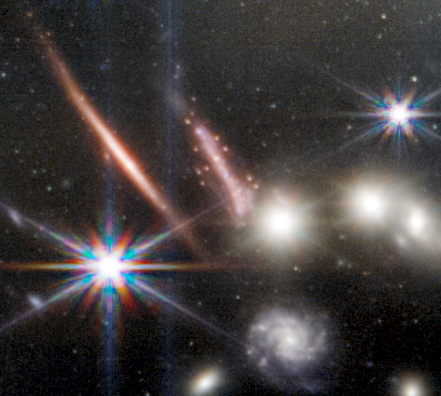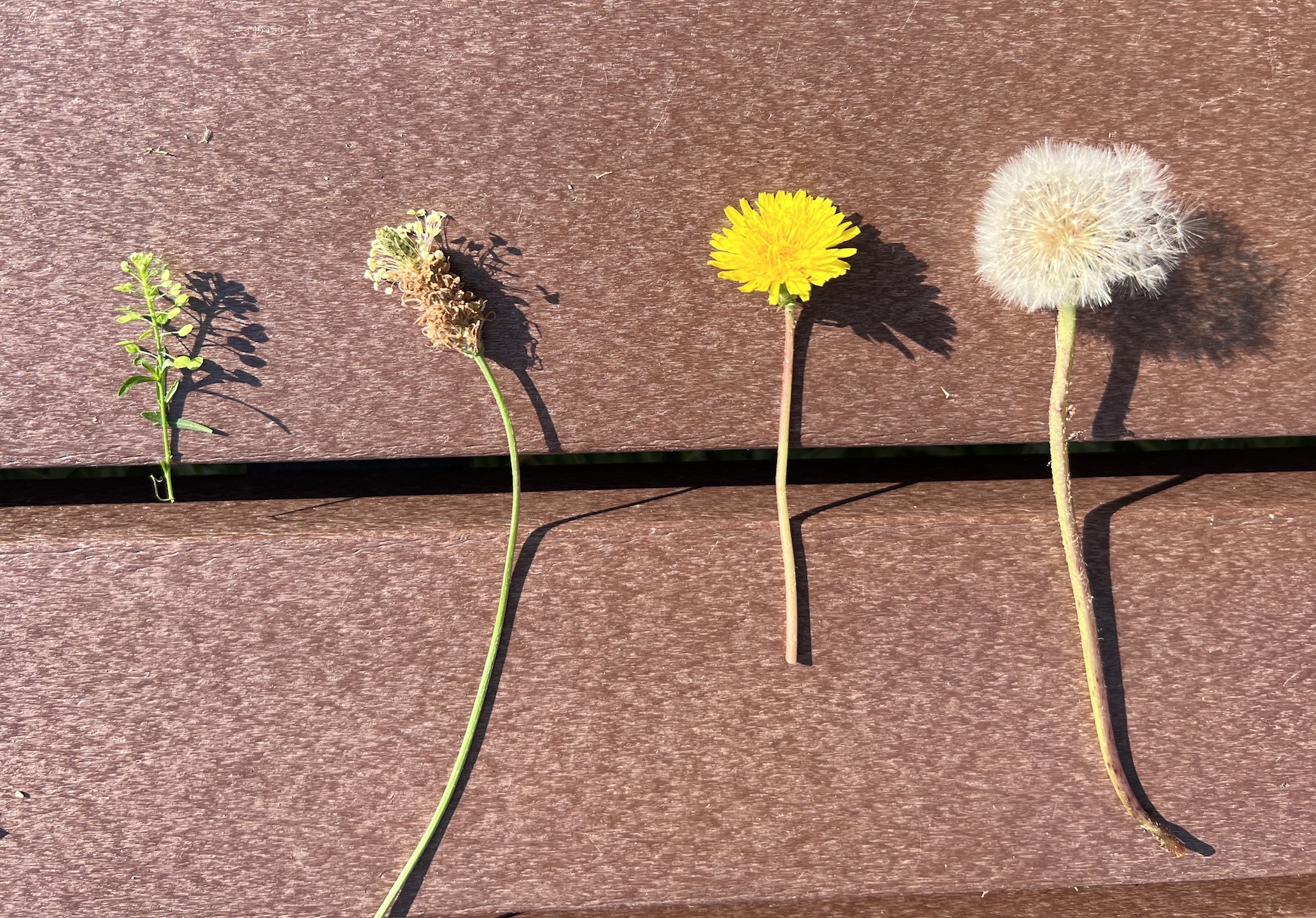Cosmic Spring
tiny buds of star formation revealed by JWST + gravitational lensing

Cosmic Spring was inspired by galaxies lensed by SMACS 0723 in Webb's First Deep Field. The galaxy in the middle of the image above especially caught our eye. We had yet to see galaxies that looked like this (except perhaps once before). Tiny buds of new growth appear to usher in cosmic spring 10 billion years ago. The combined powers of JWST + gravitational lensing are revealing the smallest details yet seen in the early universe.
This galaxy was dubbed the "Sparkler" and studied by Lamiya Mowla and Iyer et al. (2022). They find the sparkles (bright clumps) are fairly old (~4 billion years), having formed just ~500 million years after the Big Bang (without much new star formation since). They are probably like old globular clusters seen in other nearby galaxies, including our Milky Way. This is our first time seeing such old star clusters at such an early time in our universe (9 billion years ago). See the paper and our Twitter thread for more.
Flowering with new growth
Most galaxies we see nearby are majestic spirals or older ellipticals. They look kind of like dandelions. Yellow dandelions flower flat like a disk, then evolve into white puffy balls as they age, just like spirals can evolve into ellipticals.
More distant galaxies seen in the early universe are often more irregular and clumpy, yet to settle into disks or balls. With JWST + lensing, we are finally able to see the clumps of star formation in these early galaxies. These are our origins. JWST will reveal when they formed the star stuff we are made of.
